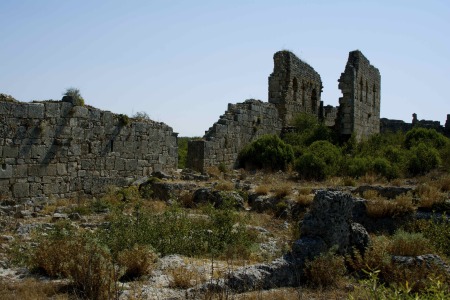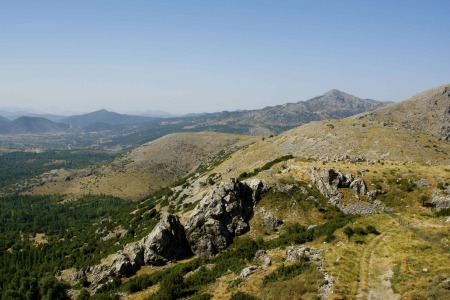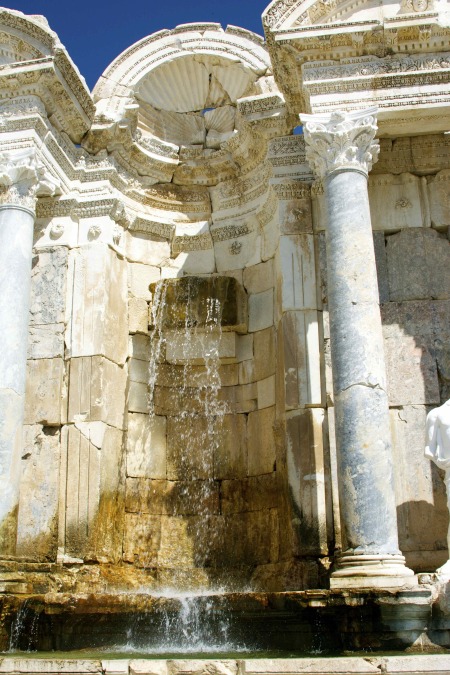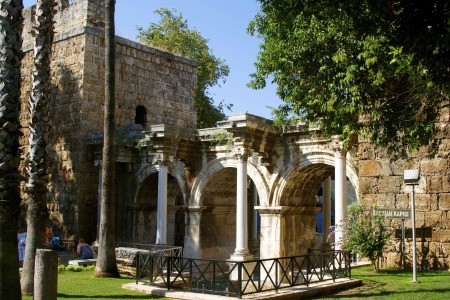Peripatetic
 Thursday, August 14, 2014 at 10:19PM
Thursday, August 14, 2014 at 10:19PM  Over the past few days, since leaving Istanbul, I've covered something like 700km by road all across the Pamphyian plain, the Pisidian highlands and the passes through the Tauros Mountains, and on into the Central Plateau. Except while sleeping, I've barely sat still. My great "rest stop" was an afternoon in Eğirdir, a pretty little town on the gorgeous lake of the same name, napping and catching up on my trip planning and emails. Other than that, it's been dawn to dusk exploration. Time is growing short. In eight days, I catch a flight back to the States, and I still have the entire stretch of the old Royal Road from here (Afyon) to Cappadocia and the Cilician Gates beyond to cover.
Over the past few days, since leaving Istanbul, I've covered something like 700km by road all across the Pamphyian plain, the Pisidian highlands and the passes through the Tauros Mountains, and on into the Central Plateau. Except while sleeping, I've barely sat still. My great "rest stop" was an afternoon in Eğirdir, a pretty little town on the gorgeous lake of the same name, napping and catching up on my trip planning and emails. Other than that, it's been dawn to dusk exploration. Time is growing short. In eight days, I catch a flight back to the States, and I still have the entire stretch of the old Royal Road from here (Afyon) to Cappadocia and the Cilician Gates beyond to cover.
 I've spent a morning scrambling up the steep escarpment at Sillyon (Sillaeon), one of the major fortified towns near Attaleia (modern Antalya), in 44-degree C heat. I've gotten thoroughly lost trying to find the ruins of Milyos and Cremna, which are a good 10 km away from where the Michelin maps show them, on crazy one-lane rural roads that wind through the mountains. (I got found again. I thank my Viking ancestors for my navigational sense.) I spent two hours trekking around the magnificent pre-Hellenistic, Hellenistic, Roman and early Byzantine city of Sagalassos, high in the mountains in what should have been a nearly impregnable position, though its strategic location stopped neither Alexander the Great nor a series of earthquakes and plagues that ultimately doomed the city.
I've spent a morning scrambling up the steep escarpment at Sillyon (Sillaeon), one of the major fortified towns near Attaleia (modern Antalya), in 44-degree C heat. I've gotten thoroughly lost trying to find the ruins of Milyos and Cremna, which are a good 10 km away from where the Michelin maps show them, on crazy one-lane rural roads that wind through the mountains. (I got found again. I thank my Viking ancestors for my navigational sense.) I spent two hours trekking around the magnificent pre-Hellenistic, Hellenistic, Roman and early Byzantine city of Sagalassos, high in the mountains in what should have been a nearly impregnable position, though its strategic location stopped neither Alexander the Great nor a series of earthquakes and plagues that ultimately doomed the city.
 I spent a couple hours in the impossibly confusing and traffic-crazy town of Yalvaç trying to find the ruins of Antioch in Pisidia, a major crossroads city that was besieged by the son of Caliph al-Walid I in 713 and never fully recovered. (The remaining ruins are unimpressive, once found.) I've followed both the western route (Via Sebaste) and central route of the old Roman roads through the Taurus mountains to the central highlands, trying to retrace the ways travelers and/or armies might have made it from the coast to the strategic cities in the Anatolikon theme during the time of my novel.
I spent a couple hours in the impossibly confusing and traffic-crazy town of Yalvaç trying to find the ruins of Antioch in Pisidia, a major crossroads city that was besieged by the son of Caliph al-Walid I in 713 and never fully recovered. (The remaining ruins are unimpressive, once found.) I've followed both the western route (Via Sebaste) and central route of the old Roman roads through the Taurus mountains to the central highlands, trying to retrace the ways travelers and/or armies might have made it from the coast to the strategic cities in the Anatolikon theme during the time of my novel.
Today comes the highlight of this part of the trip: Amorium, the Byzantine fortress city that was the capital of the Anatolikon theme. The city was sacked by the Arabs in 838 and never fully recovered, but at the time of my book, it was a relatively thriving crossroads city, well fortified and crucial to the defense of west-central Anatolia and the approaches to the strategically vital cities farther to the west and northwest. Here, the future Leo III, newly appointed strategos of the Anatolikon theme, played a game of cat-and-mouse with the Arab armies in the summer of 716, holding out to them the possibility that he might be their bought man in Constantinople if they would only help him attain the throne, while buying time and pinning the bulk of the Arab army in place through an entire campaign season while he frustrated them through sheer diplomatic wiles. From here, he raced to Constantinople as soon as the campaign season was over and, with the help of Artavasdos, the strategos of the vital Armenian theme, made his ultimately successful bid for the Imperium.
Amorium is crucial to my story, so I hope the site will whisper to my imagination whatever secrets it has left to tell. Sadly, the team that has been excavating the site for the past 25 years or more did not obtain their permit to dig this year, so there will likely be no archaeologists on site. I'll have to go by the articles and maps that I brought with me, and then bombard Christopher Lightfoot and Zeliha Demirel Gökalp, the former and current directors of the Amorium Project, with questions about the state of the city in 715.
It will be a big day. 
And then, tomorrow, on to Cappadocia, via the ancient roads (or the closest approximation I can manage on the current road system), to see what an army invading from the Cilician Gates would have seen as they crossed the Anatolian Plateau. I look forward to Cappadocia both as a capstone of my journey and as a chance to take a (relative) rest. Assemble my notes, catch up on my actual writing, and explore the remaining areas in south-central Turkey that would have played a role in the story of the Siege of 717-18 and its buildup.
I've uploaded several new batches of photos from my journey - so far untagged, but organized by site, to make it easier to identify what you're seeing. When time permits, I'll try to go through and describe each photo and provide further detail.
Enjoy!